Antelope Island is ablaze with color this fall, provided by the common sunflower Helianthus annus. The sunflower display is really quite spectacular this year – the most prolific I’ve ever seen it. I suspect it’s because of the very wet spring we’ve had.
The sunflowers can provide a very pleasing setting for wildlife photography, whether the flowers are in focus along with your subject or out of focus to show off some pleasing and unusual color in the background bokeh.
Canon 40D @ 72mm, 1/800, f/6.3, ISO 320, EV +0.33
It’s unusual for me to get so close to a pronghorn that I don’t have to use a telephoto lens but these bucks are in rut right now and they’re so intent on herding their harem of females that they’re not nearly so wary of people and vehicles. So I quickly pulled out my old 40D and shot this handsome fella at only 72mm while he was right next to my pickup and staring intently at his ladies close by. This allowed me to keep many of the sunflowers relatively sharp and gave a different “feel” to the image than I usually get with my big glass.
Canon 7D, 1/2500, f/5.6, ISO 640, EV + 0.33, 500 f/4, 1.4 tc
In contrast to the previous image, this Vesper Sparrow was shot with my 500mm and 1.4 teleconverter (1120mm with the crop factor of the 7D) at f/5.6 which gave me very little depth of field – just enough to get the sparrow sharp but the sunflowers in the background are so out of focus that they provide pleasing diffuse colors and bokeh.
Canon 7D, 1/1000, f/6.3, ISO 640, EV + 0.00, 500 f/4, 1.4 tc
For me the sunflowers add interesting but slightly different elements to each of these three coyote images. In this photo I’m looking down on the coyote from the top of a relatively large hill while he/she looks back at me from his own smaller “hill”. I like the effect of the lone sunflower on the left and the smaller one mimicking the curve of the foreleg.
Canon 7D, 1/1000, f/6.3, ISO 640, EV + 0.00, 500 f/4, 1.4 tc
Here the same coyote has decided to do a little hunting and is using the sunflowers to provide some concealing shade from the early morning sun as it scopes out the grasses looking (and listening) for voles. There’s just enough light in the right eye of the coyote to make this work for me.
Canon 7D, 1/1000, f/6.3, ISO 640, EV + 0.00, 500 f/4, 1.4 tc
A few seconds later “he” has apparently heard a vole in the tall dry grasses and is bounding through them to see if he can capture a meal. This time he failed. For me the presence of the sunflowers is not distracting and makes for a more interesting image – especially since much of the body is obscured by the grasses.
Canon 7D, 1/1600, f/6.3, ISO 640, EV + 0.33, 500 f/4, 1.4 tc
It’s challenging to get good detail in the blacks of the Common Raven but here I had the sun at a good angle to get that detail, some interesting squawking behavior from the bird and nice color from the sunflowers in the background. The boulder perch is composed of Tintic Quartzite as are most of the rocks on the north end of the island. Typically the almost white color of this mineral makes for a frustrating exposure, especially with an all black bird perched on it but the sun was still low enough that I got away with it and didn’t blow out the light color of the rock.
Canon 7D, 1/2000, f/6.3, ISO 500, EV + 0.33, 500 f/4, 1.4 tc
In this photo of a stretching Western Meadowlark (on a less than perfect perch but I did like the pose) the sunflowers are far enough away in the background to only provide color, with barely a hint of flower shape or form.
Canon 40D @ 17mm, 1/200, f/10, ISO 500, EV +0.33
There are some areas on the island where the sunflowers are so profuse that 50 to 100 acres will be densely covered with them and then other areas where there are few or none. In a few spots you can find sunflowers mixed with cleome – Cleome serrulata. I enjoy the mixture of colors in these patches when I can find them.
Canon 7D, 1/1600, f/6.3, ISO 400, EV + 0.33, 500 f/4, 1.4 tc
Not all of the yellows on the island are provided by sunflowers. Rabbitbrush is just now coming into bloom and it can provide an interesting and colorful perch for birds. I’ve been trying to get close to Sage Thrashers all summer with absolutely no success until this week when I found a few approachable juveniles. I was delighted when this one landed on a blooming rabbitbrush and let me within acceptable photo distance. The background is the Great Salt Lake.
If you’ve never been to the island when it’s in full bloom like it is now you should consider the trip. In early morning or evening light the vistas of yellow are simply stunning. And you never know what critters you may find…
Ron



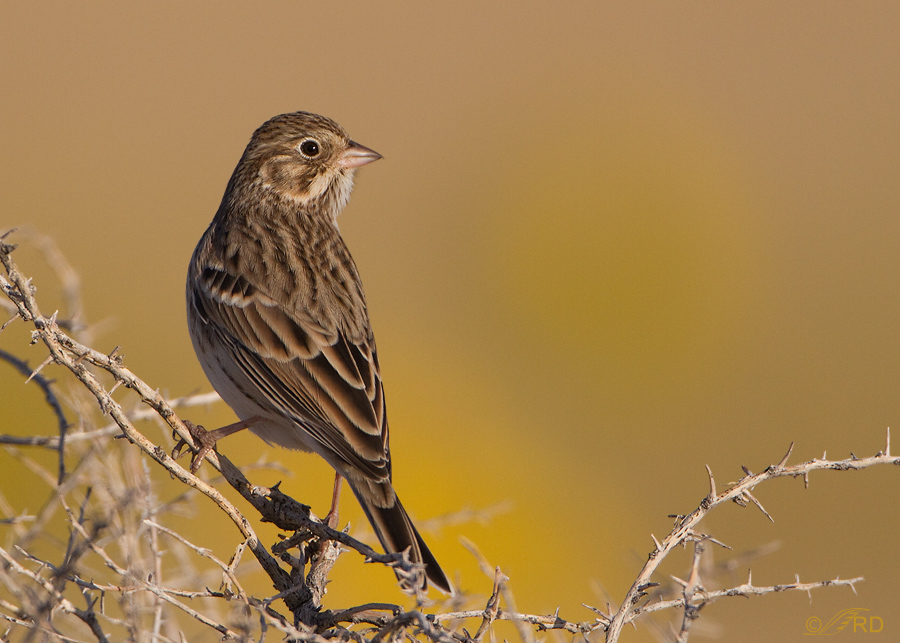
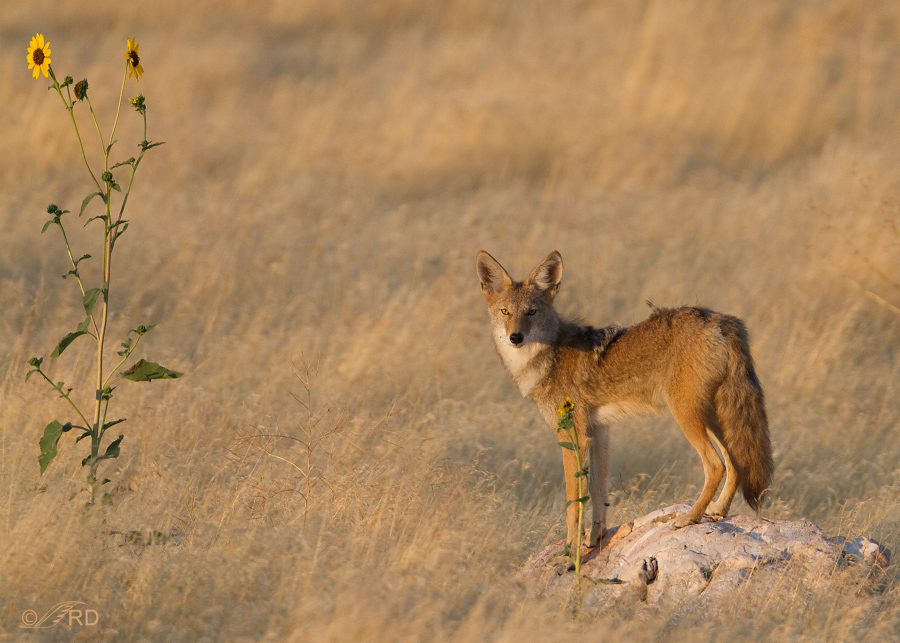
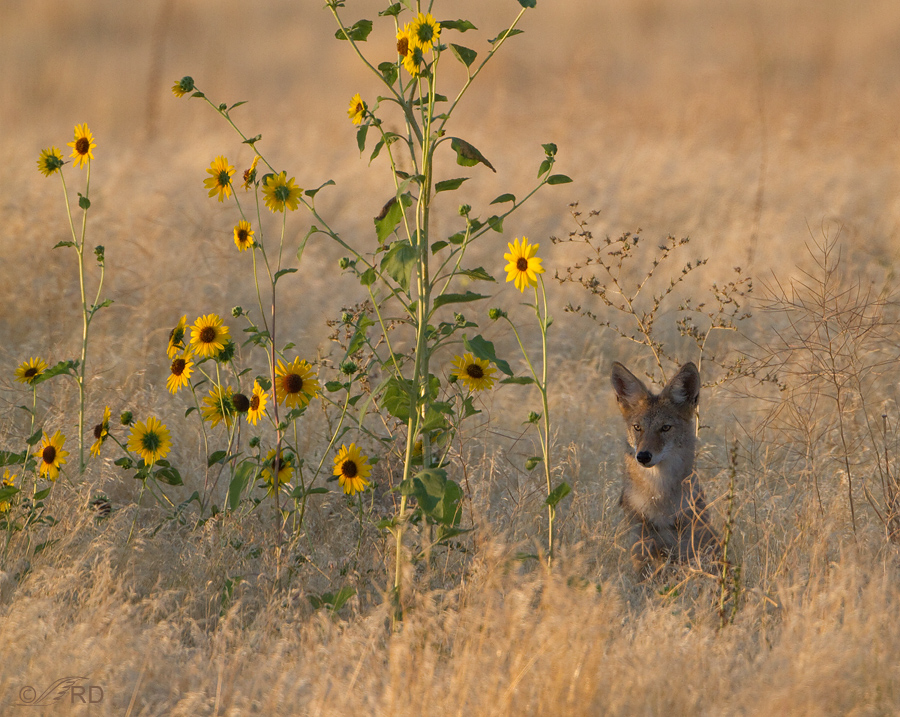
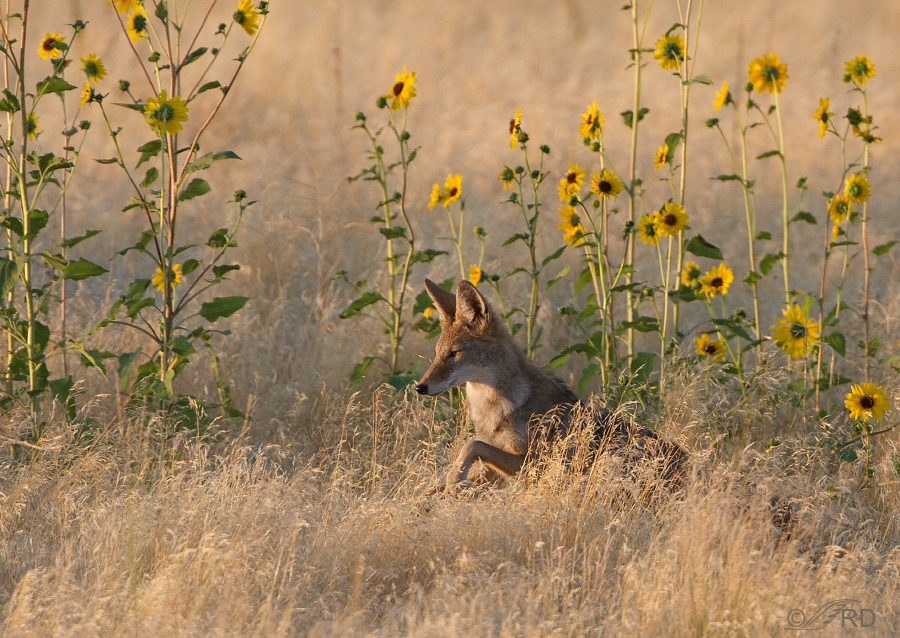
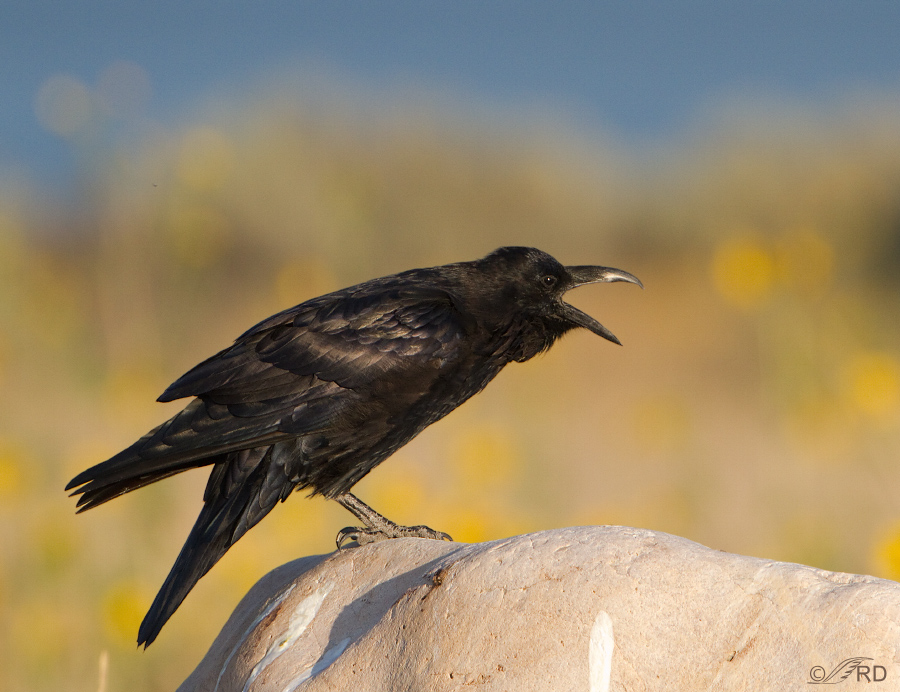

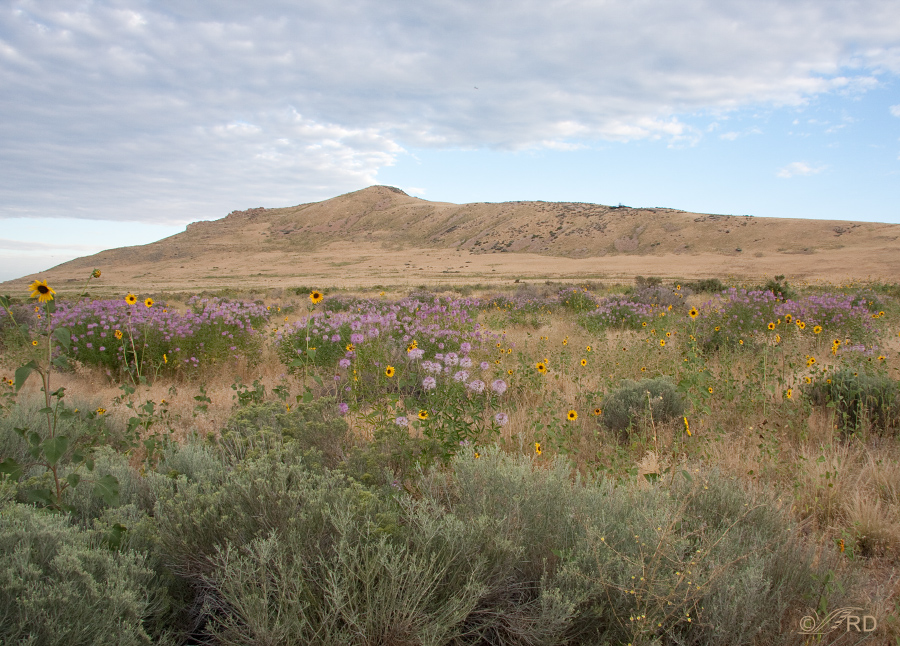
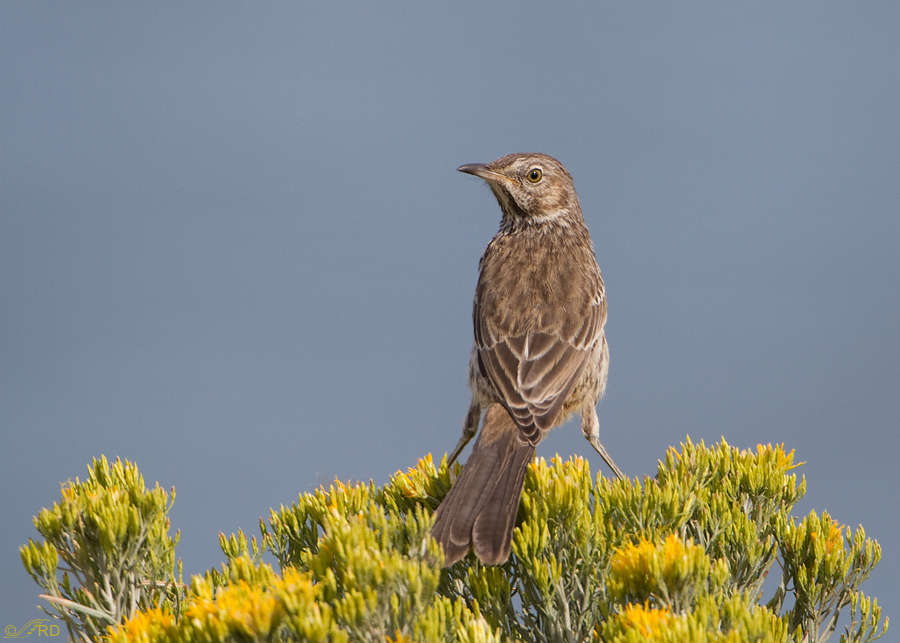
These are, err hem, picture perfect. I especially like the juvenile sage thrasher. His expressive eyes and dauntless, splayed posture exude youth as he overlooks his burgeoning domain. Lovely stuff!
Thanks Tana. Nope, I never have. But some of those organizations do approach me for images occasionally.
These photos are calendar worthy! Do you ever submit them to wildlife organizations? They deserve a wilder audience. Thank you for posting.
I can never understand why you don’t have hundreds of comments. Seeing that there is a new post from you brightens up my day – and then I open it and get really engrossed. I love them all, but I think the stretching meadow lark gets my vote this time.
Thank you. Lots.
Wow Ron, what gorgeous photos! The sunflowers are beautiful. My favorite is the last coyote shot- perfect lighting, foreground, and background.